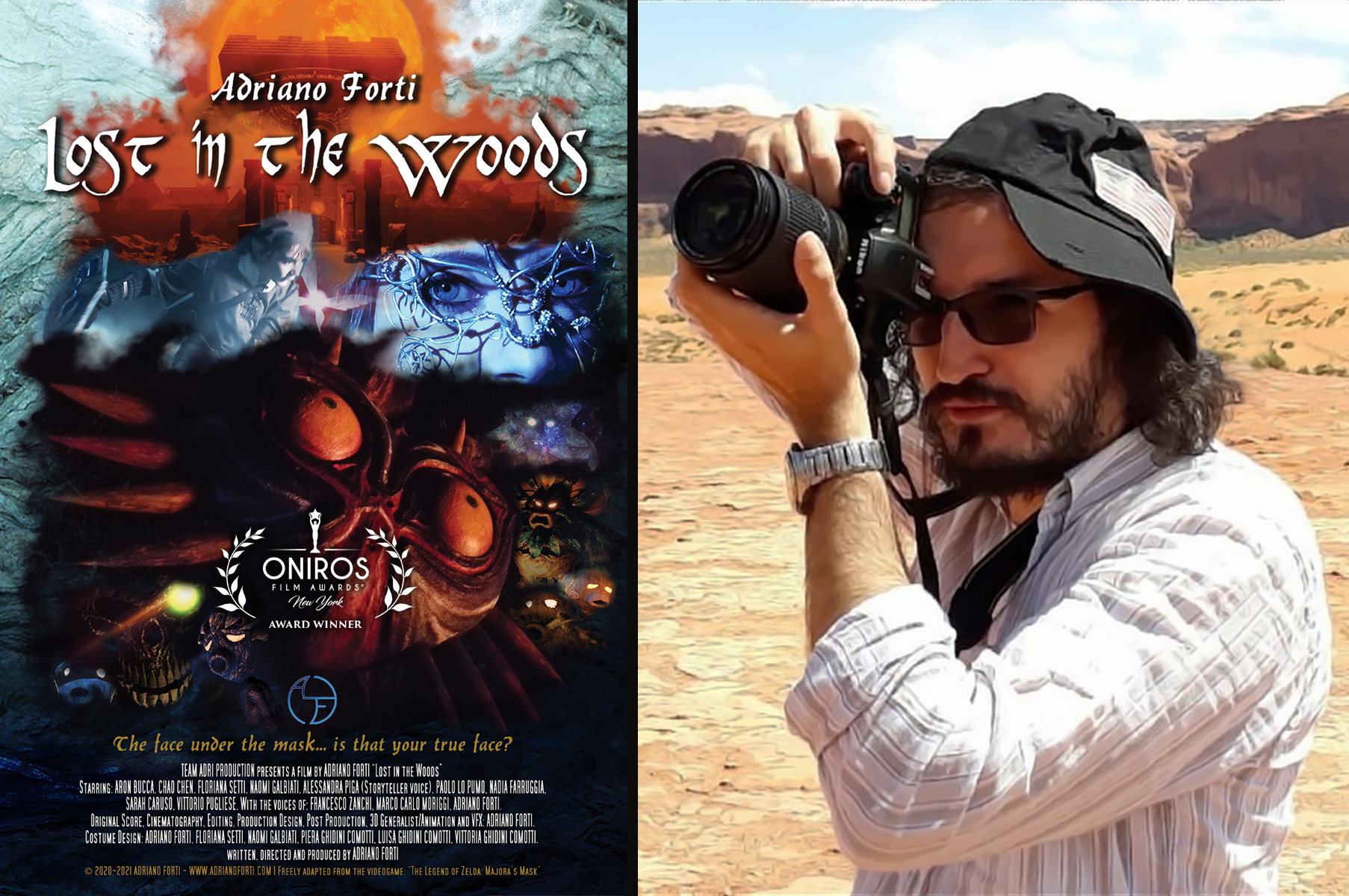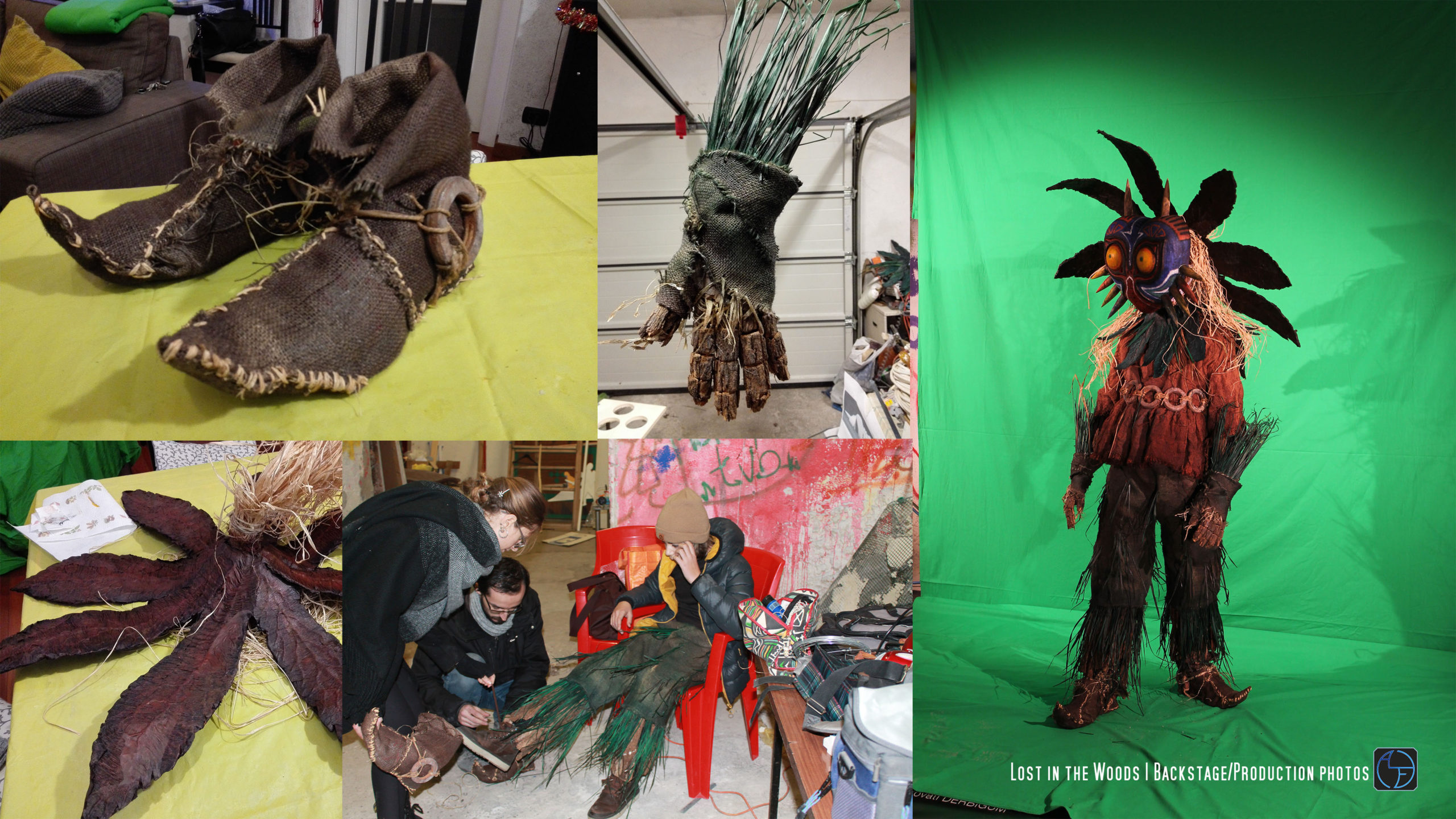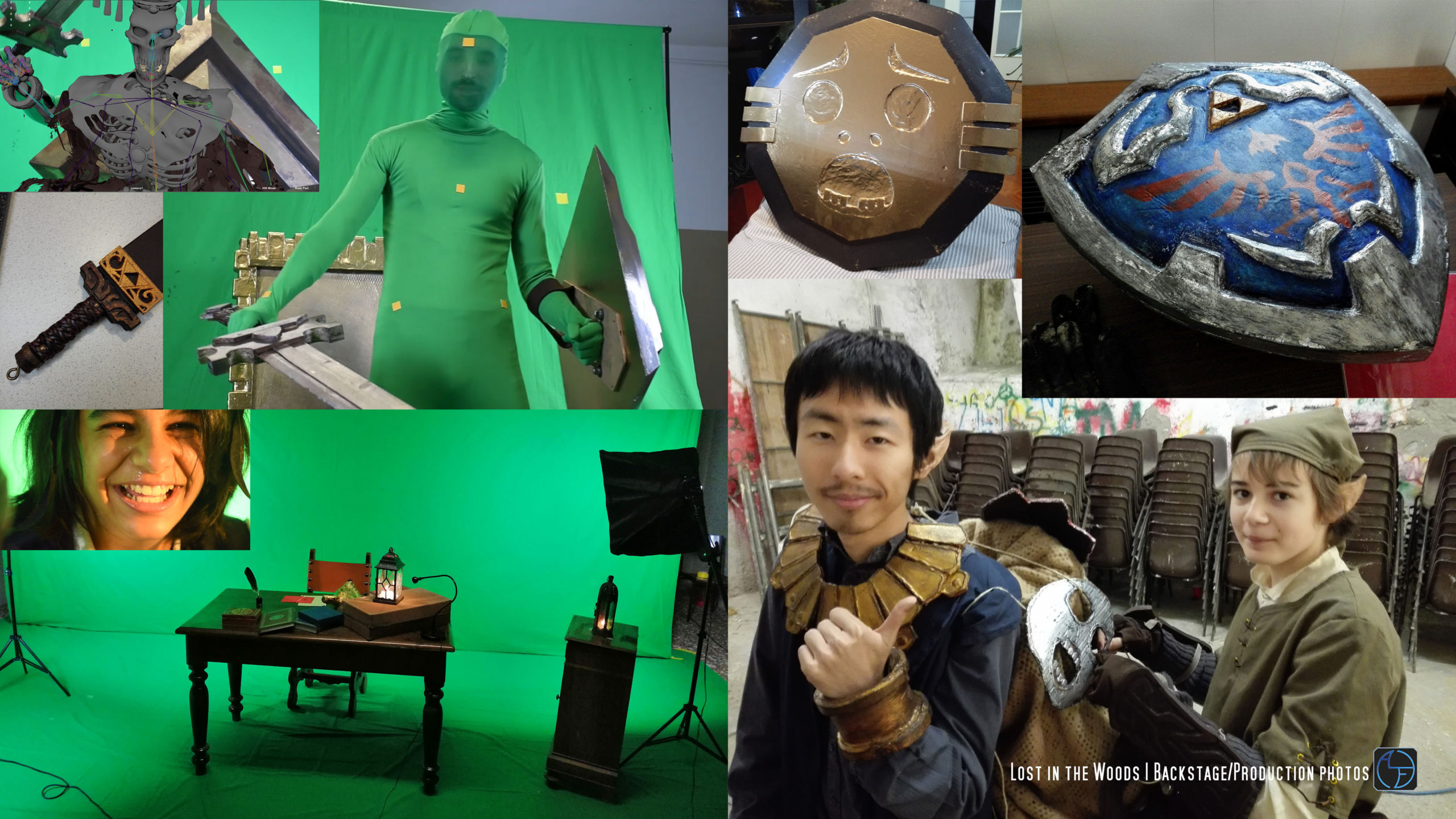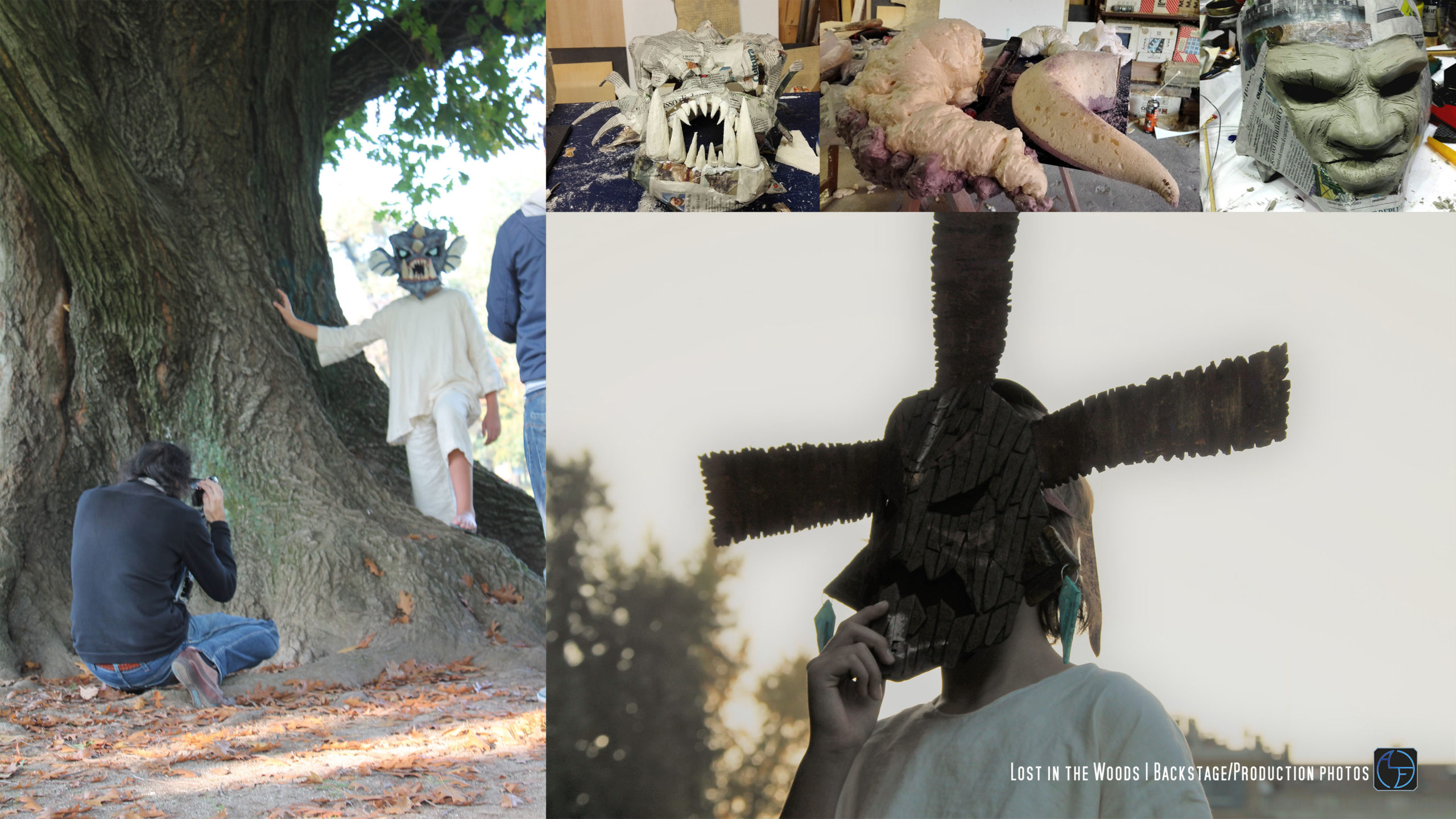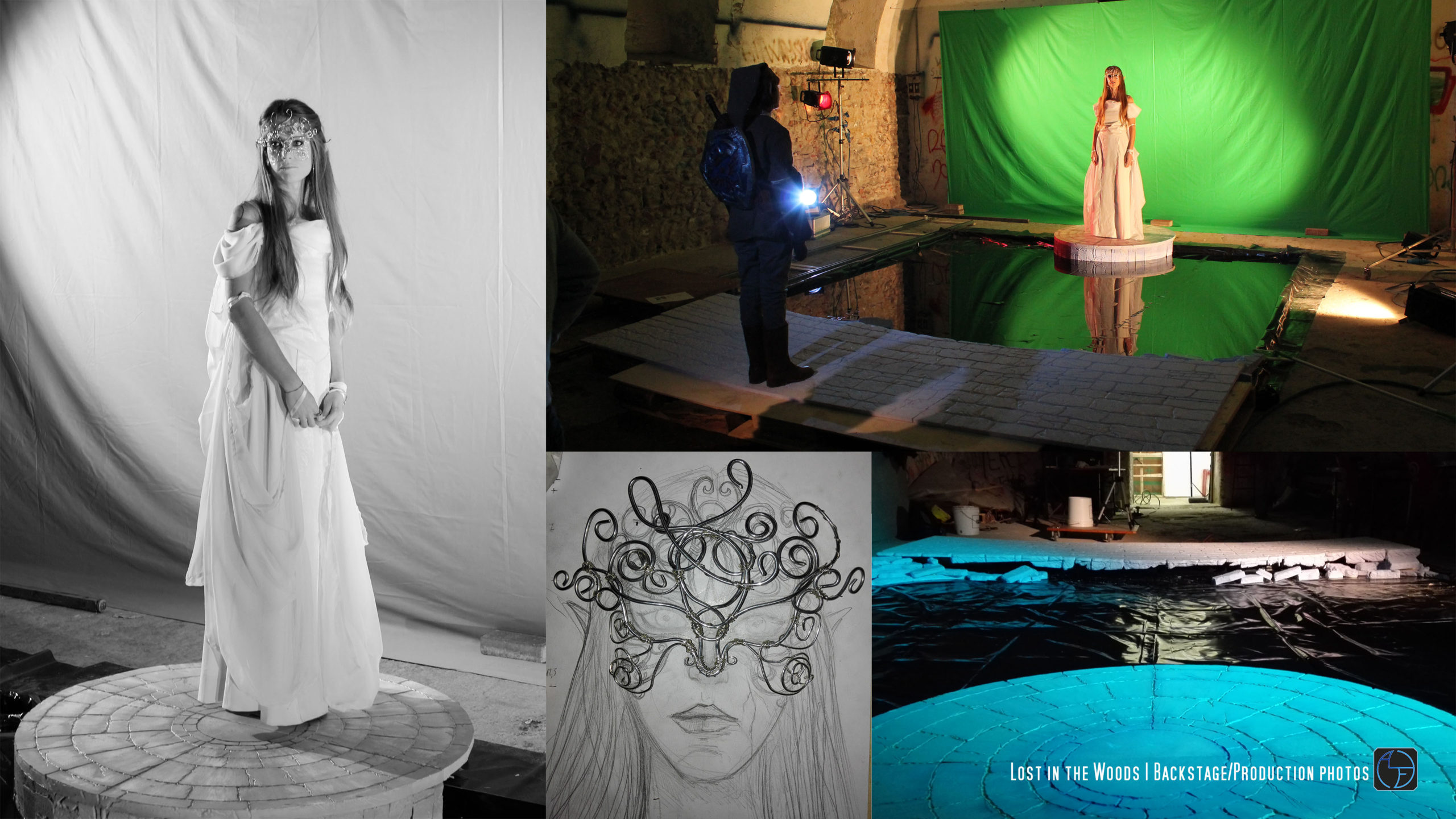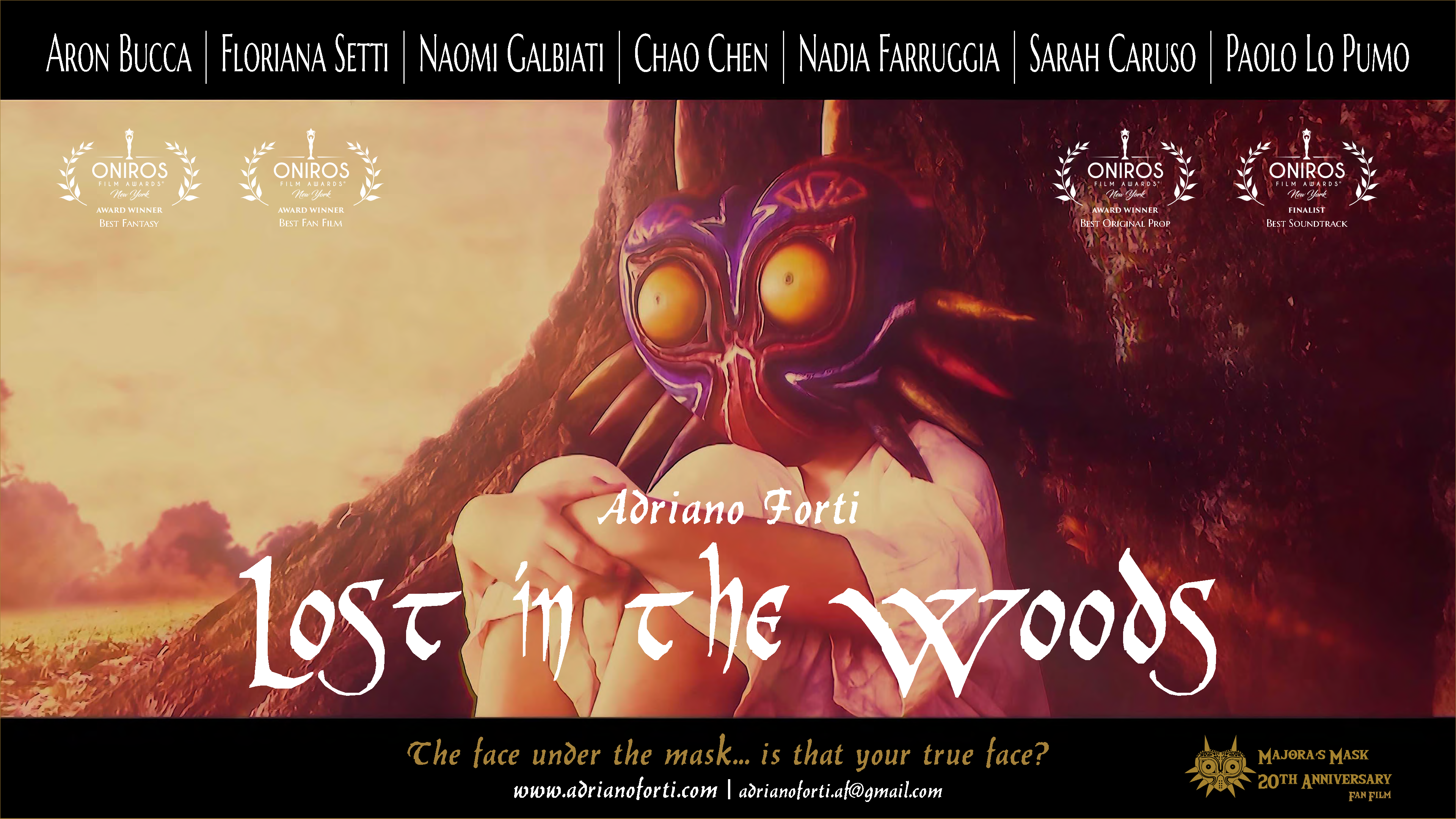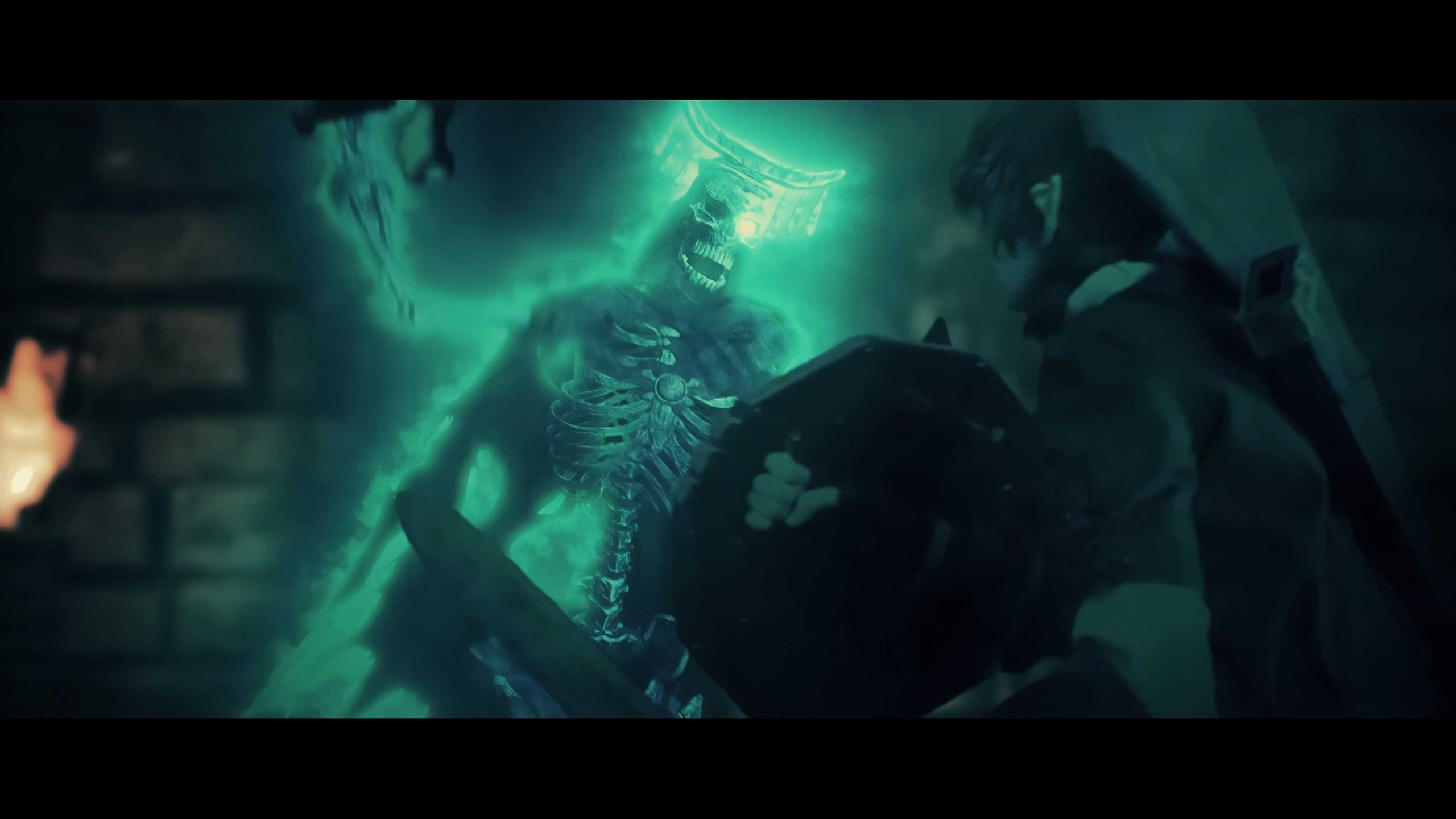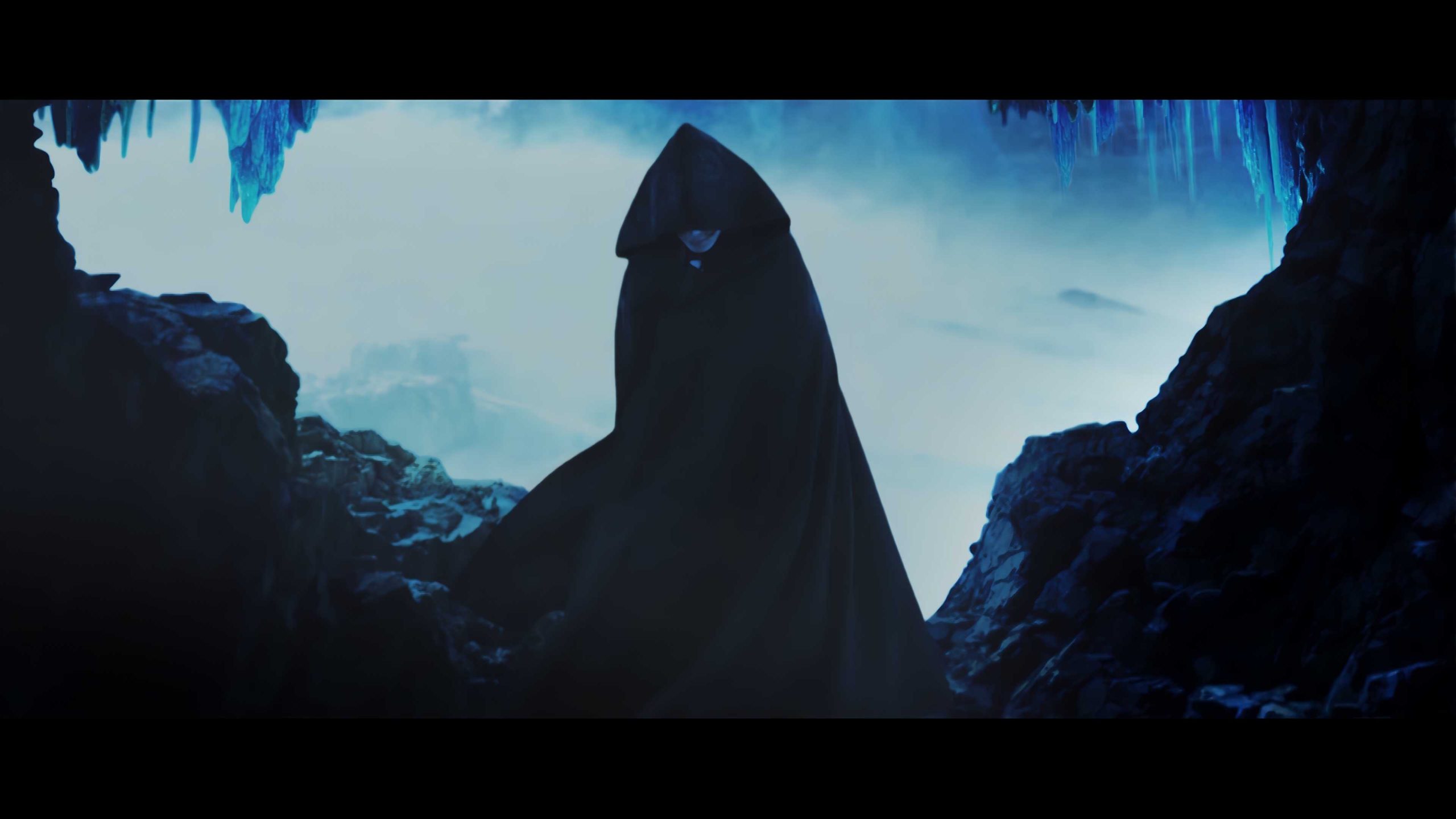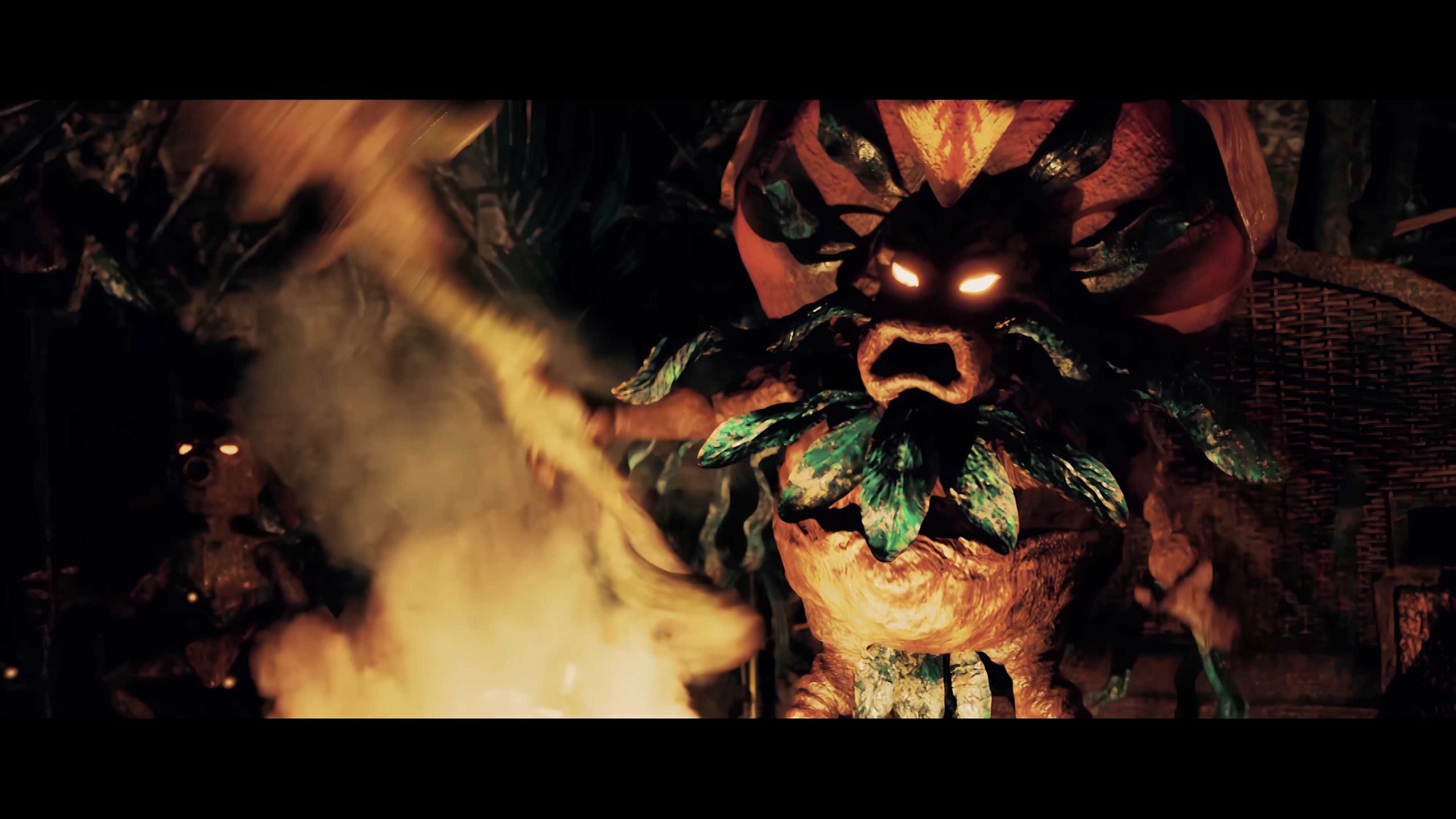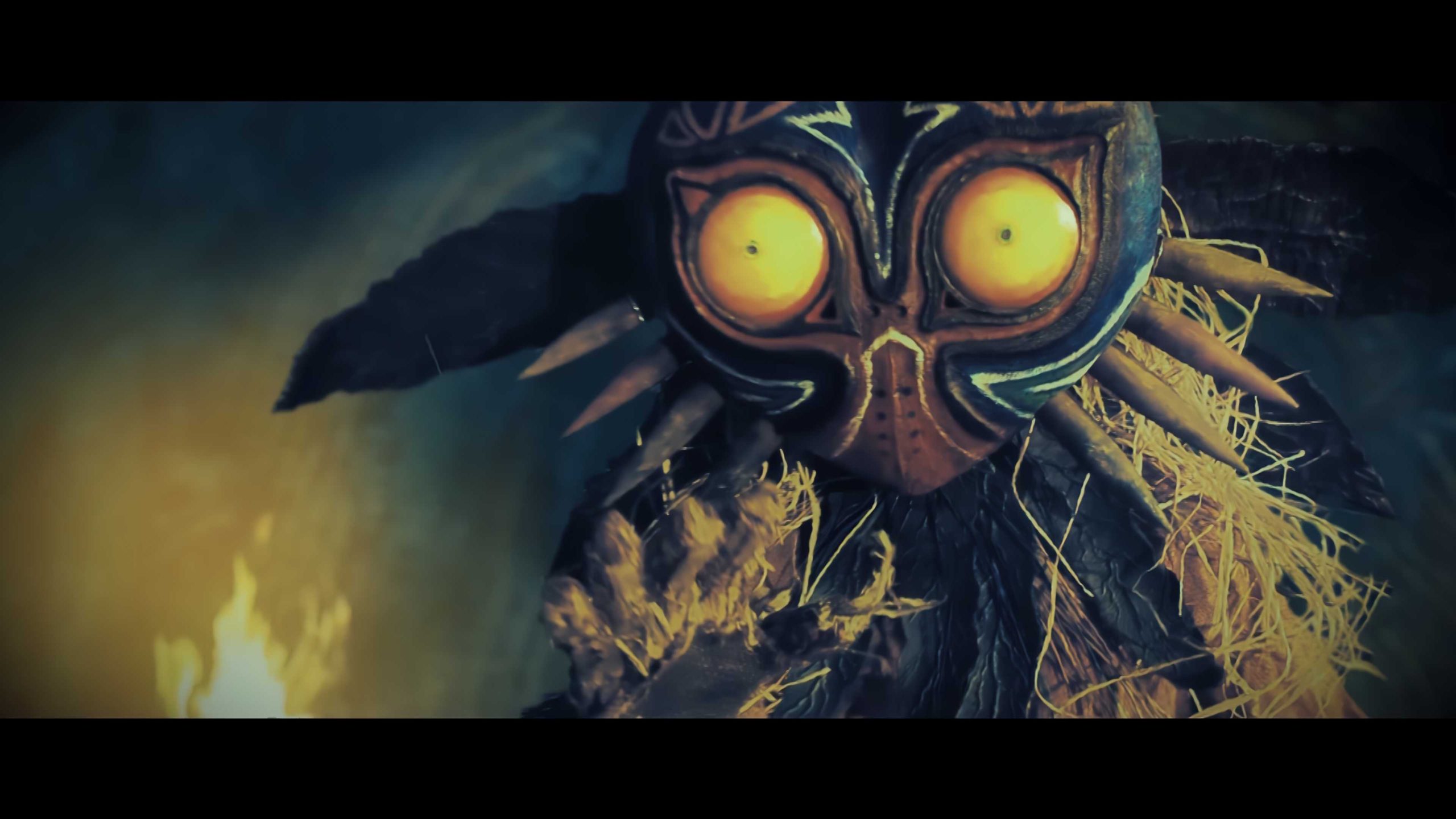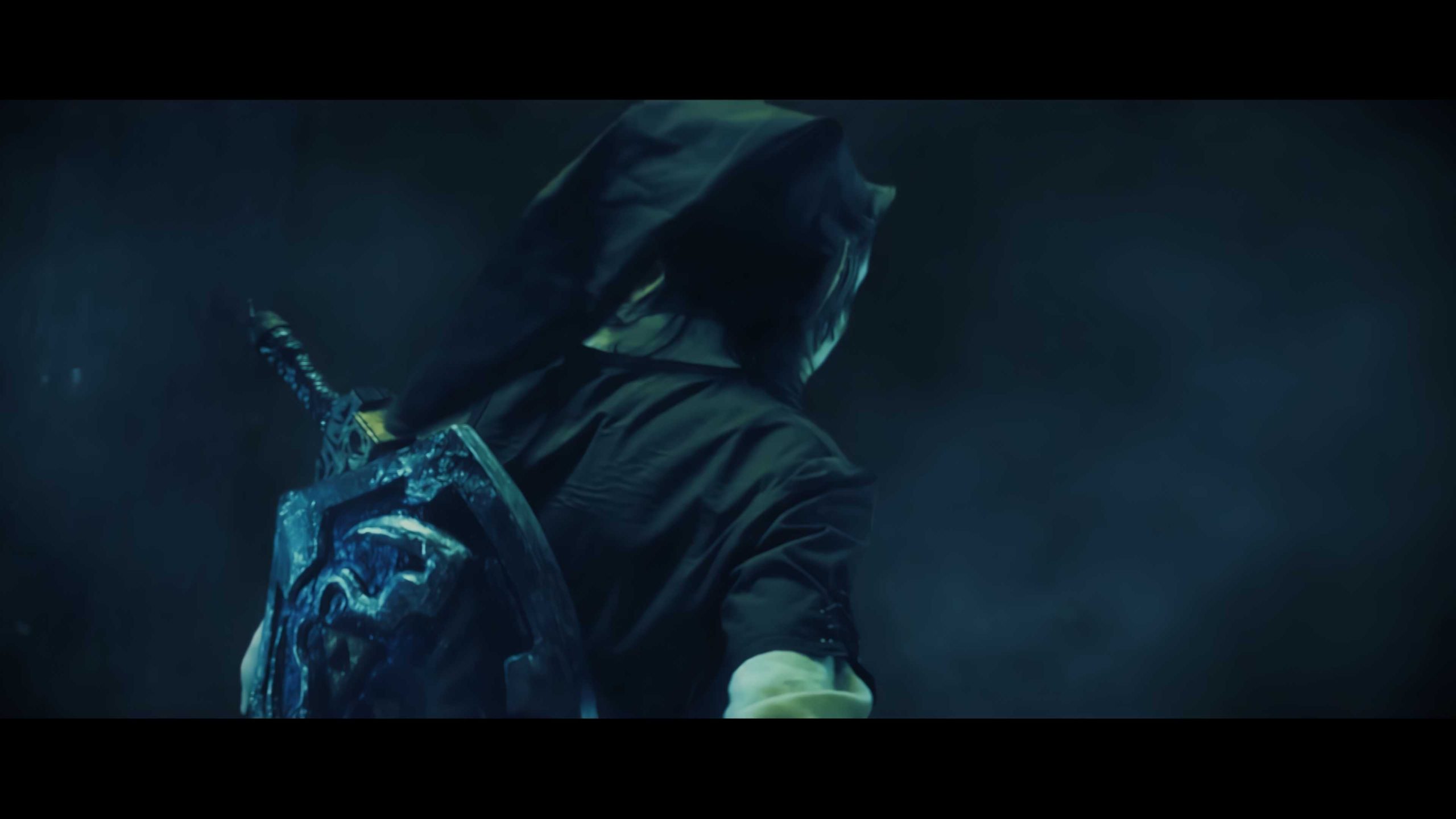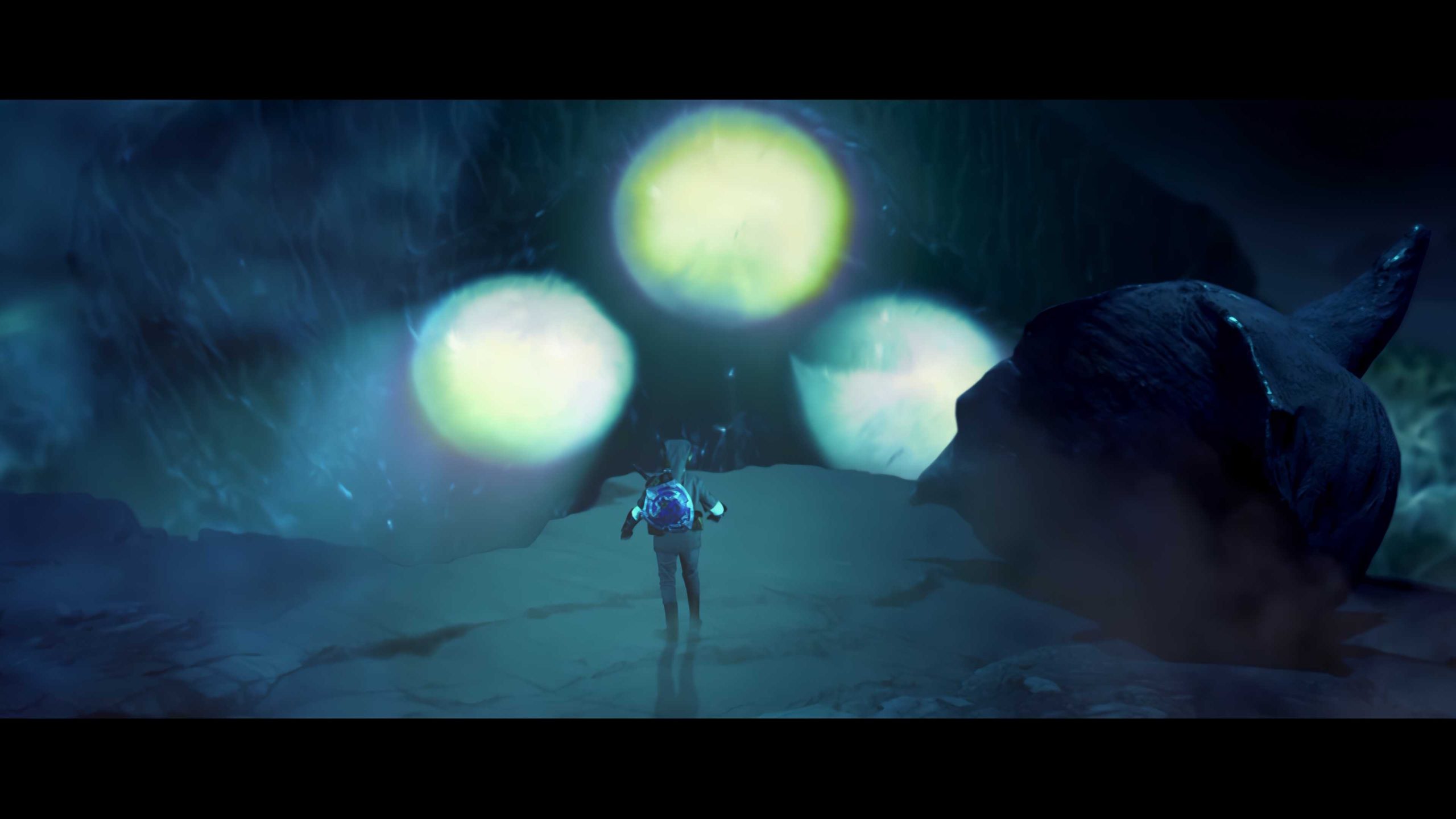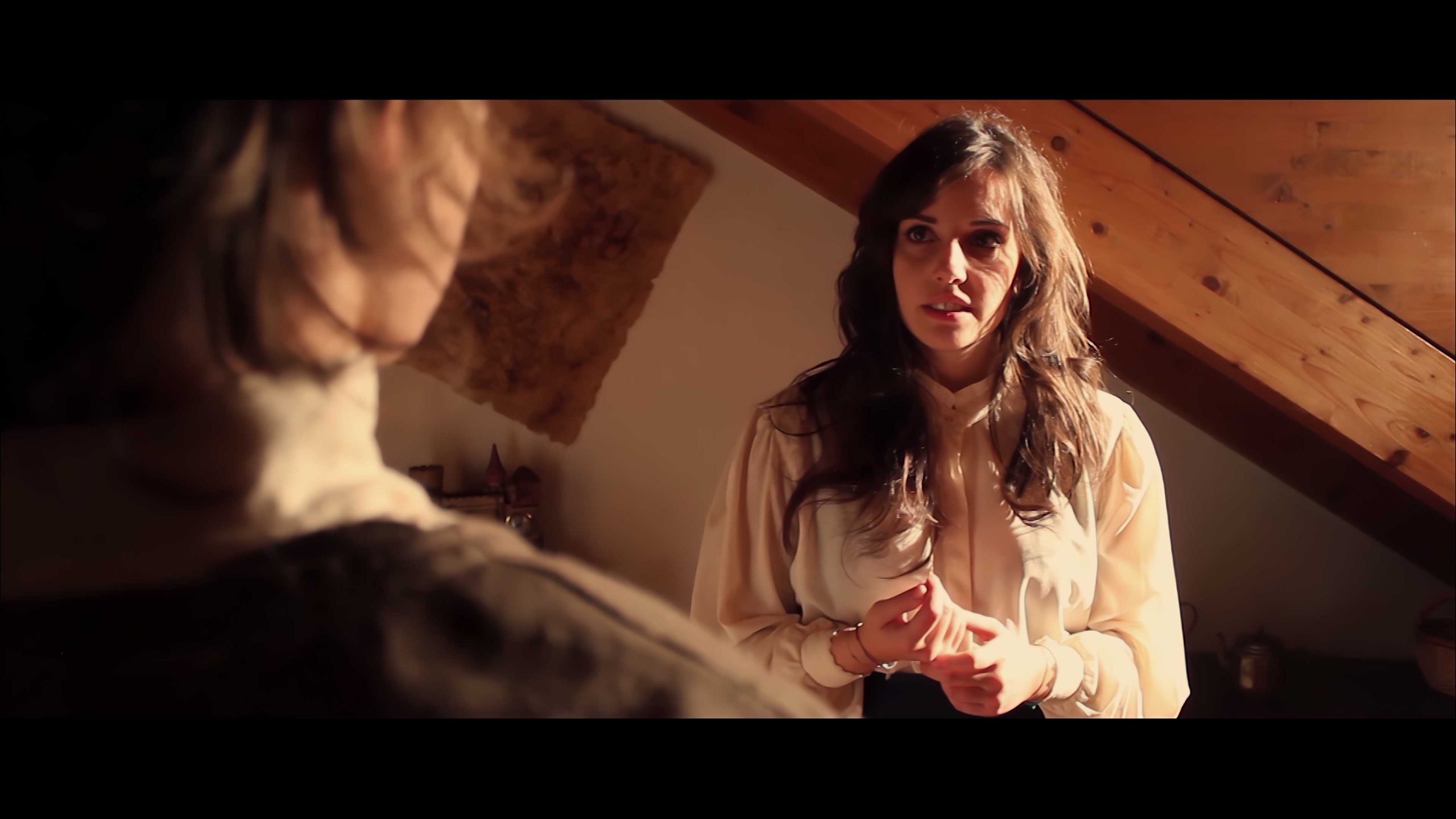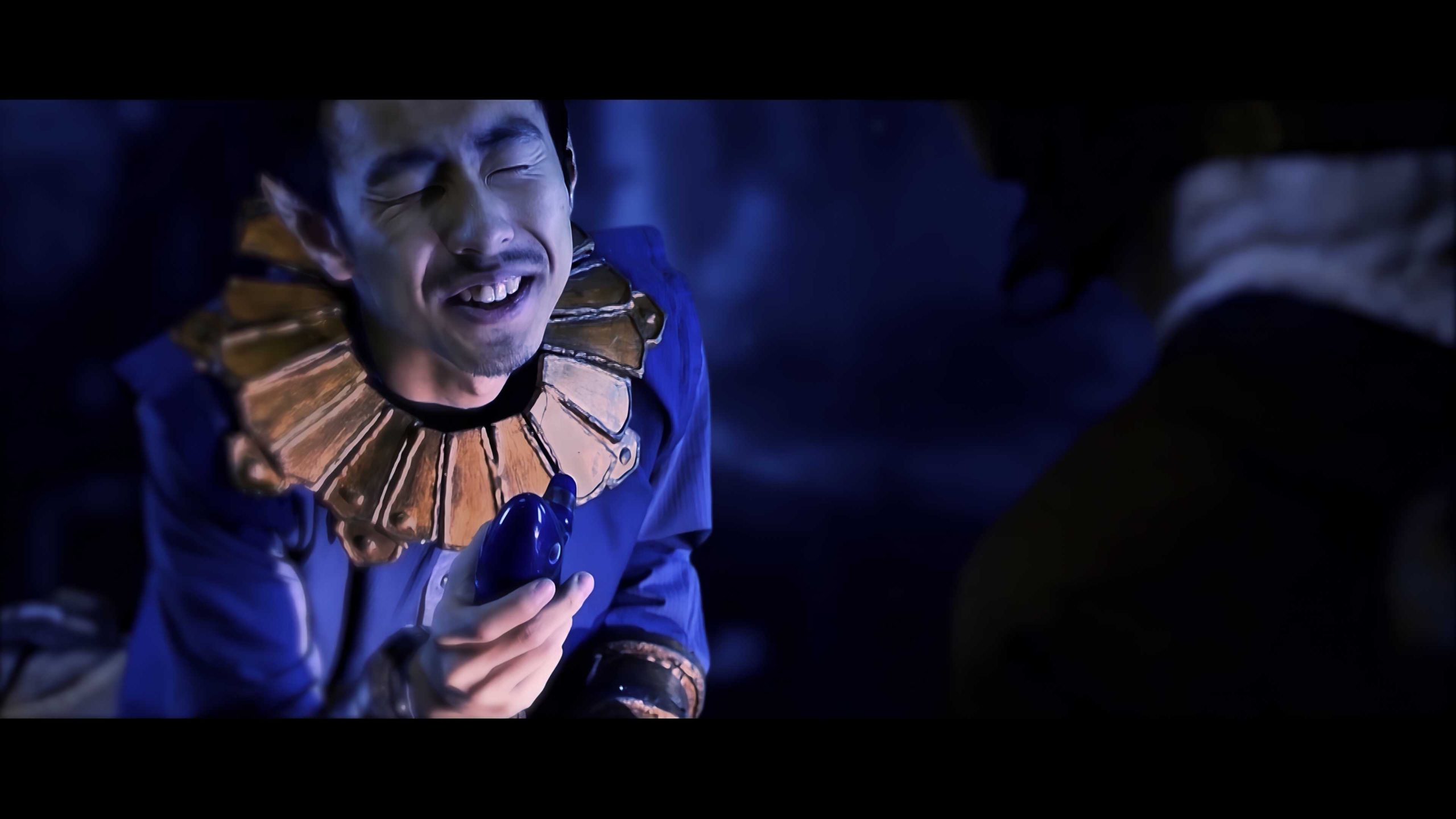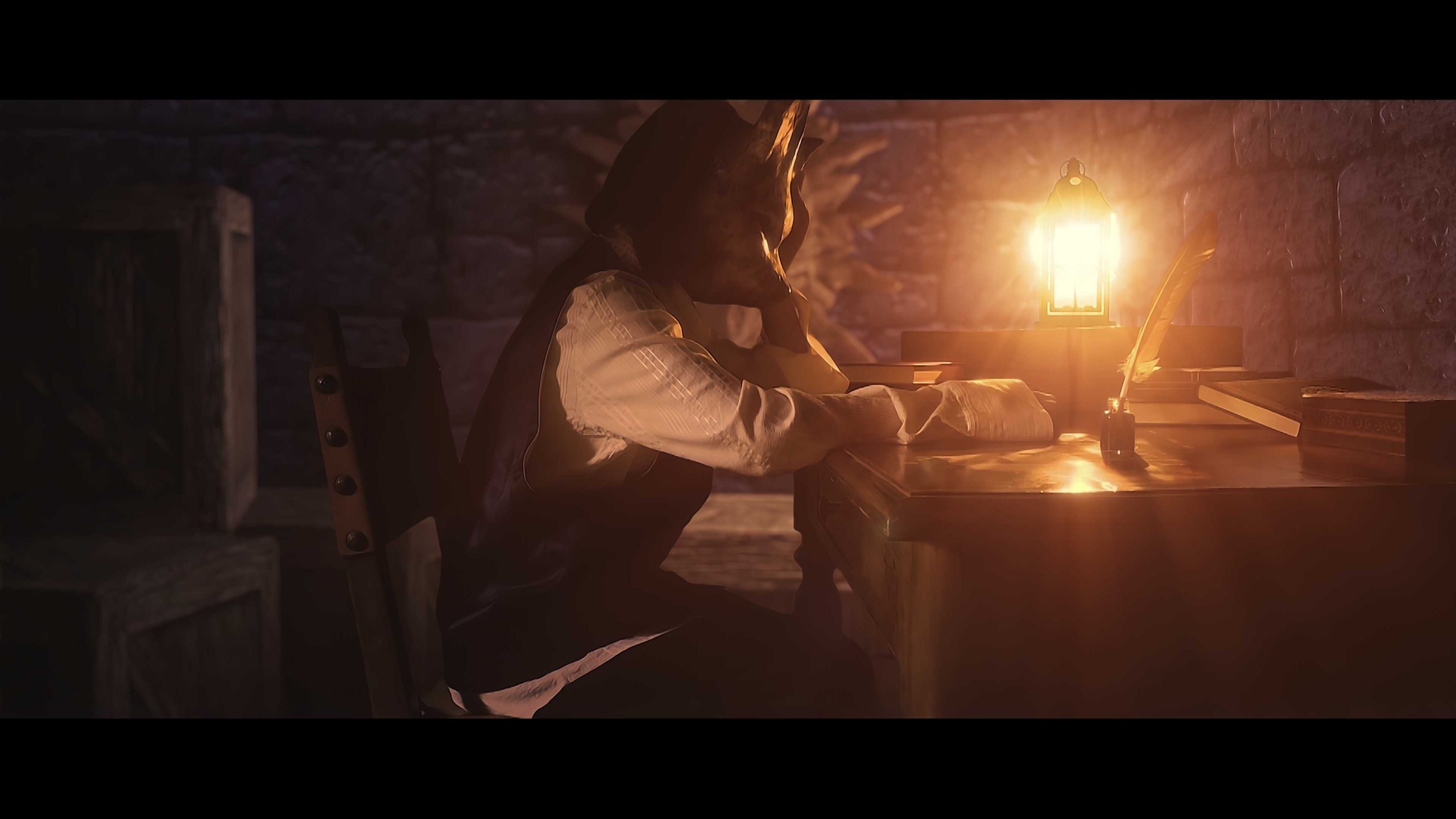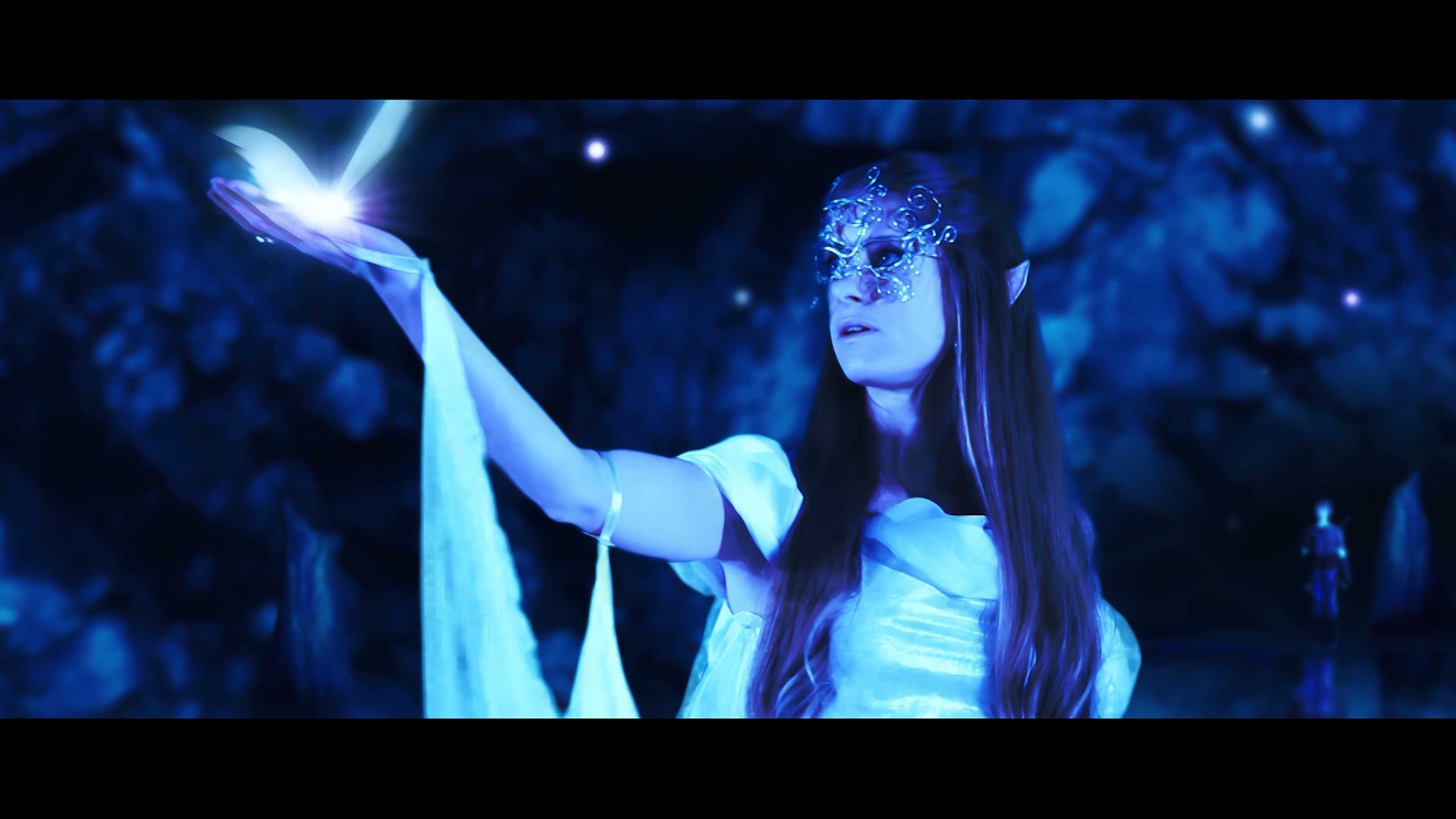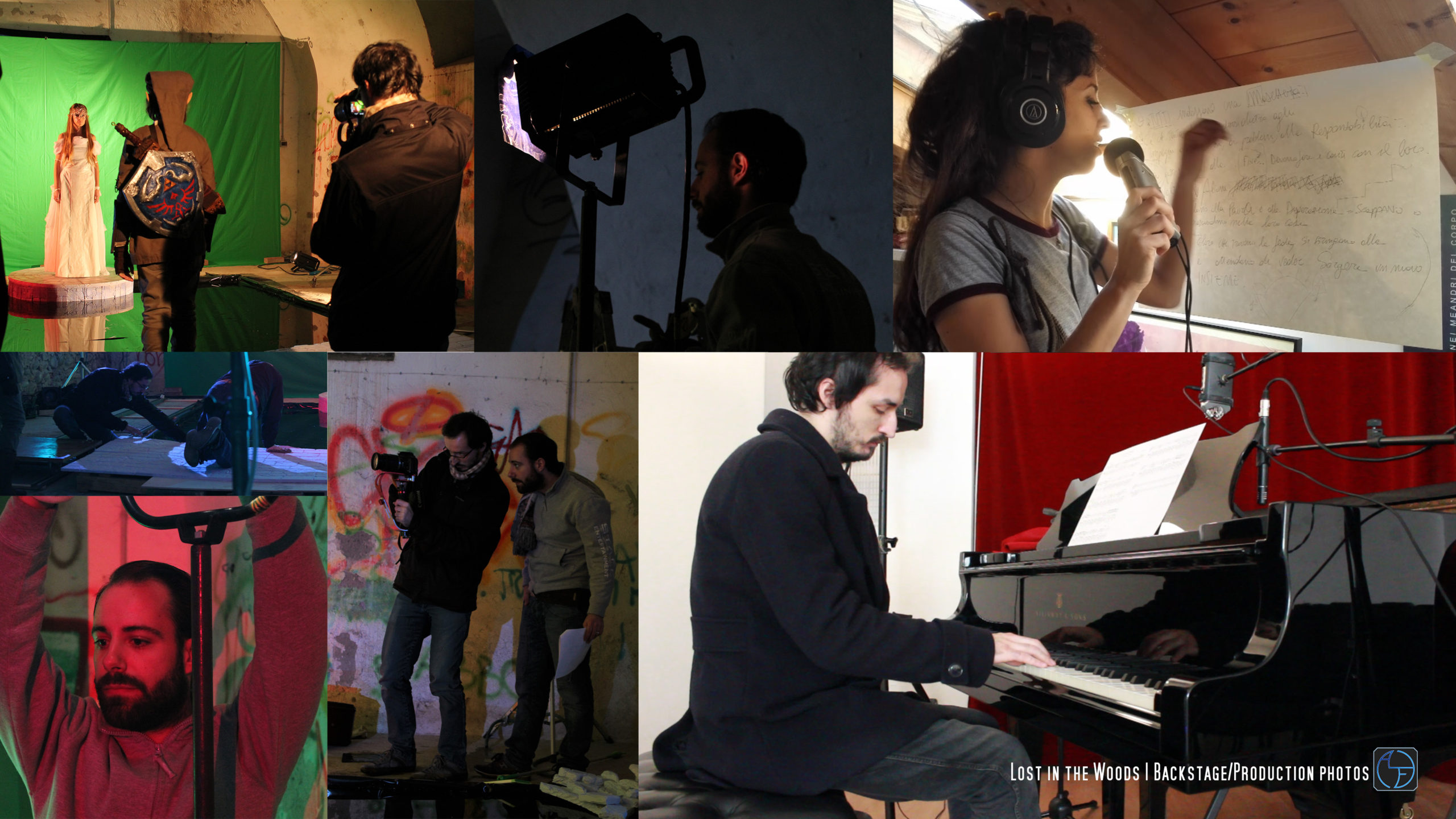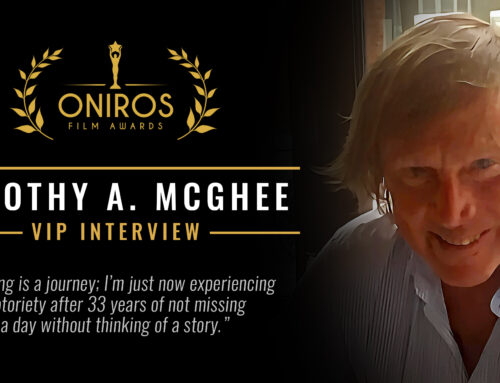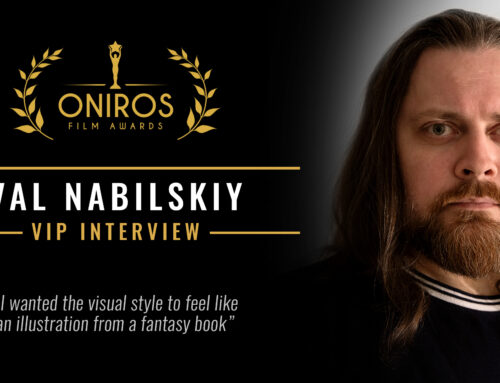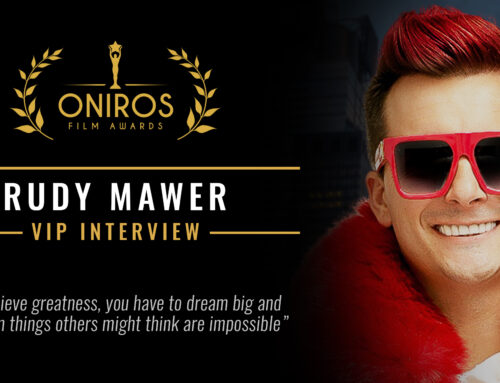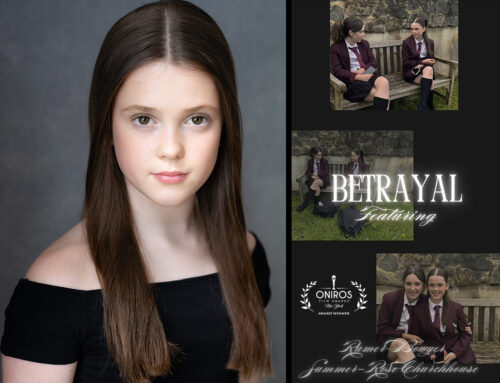BEYOND THE ONIROS FILM AWARDS®
VIP Interview with Adriano Forti, director of the feature film ‘Lost in the Woods’
by Alice Lussiana Parente
Adriano Forti is a talented filmmaker, production designer, costume designer, composer (and so much more really) of the fantasy feature film Lost in the Woods. Originally from Italy he adapted the videogame: The Legend of Zelda: Majora’s Mask into a feature film during the pandemic. In this interview we talk about the inspiration behind the film, the importance of teamwork and the future of the fantasy genre in Italy. Mostly, we reminded ourselves that as storytellers, the most important thing we can do is to value and celebrate our stories and our diversities with respect and passion.
1. Hi Adriano, it’s been a pleasure watching your work and congratulation on your award at the Oniros Film Awards! How did your career as a filmmaker began?
My first project as a filmmaker was Lost in the Woods. However, the first time I presented it was for my graduation in Set design for Cinema & TV at Brera Academy of Fine Arts as a short film of 15 minutes: it was really different from the feature film it become in the 110 minutes final cut!
Previously I made a couple of video projects for some of the courses I was attending at the Academy of Fine Arts: one focused on the song Tonight’s the night by Neil Young, the other on a modern adaptation of the second act, scene 7th from Shakespeare’s Macbeth that I mixed with some personal suggestions on the duality of the human nature and our inner desires, connecting it with the song red right hand by Nick Cave.
I’ve always been fascinated by the synergic interaction between images and music and the way they can recall each other.
Next I’ve been invited by Loredana Putignani, teacher of directing at Brera, to join an amazing group of young artists from all the corners of the world into the making of a performing art show named Wasted lives – Underskin, presented several times with site-specific set up for different locations such as the former church of San Carpoforo, Triennale Theatre of Arts and for the “Estate Sforzesca” festival, with a show set up in the courtyard of the arms of the Sforza castle in Milan.
In the same period, I worked as assistant property master and set decorator on the feature film “Pane dal Cielo”, produced by Bedeschi film for charity purpose with the patronage of the municipality of Milan, to help associations who take care of homeless and poor people of the city: a great experience for me. After that, I worked on the shortfilm for advertising purpose “To the fire and beyond” by Francesco Guarnori with the collaboration of C.S.C. of Milan for Eataly World client, and on the shortfilm “Hydrus” by Marco Bonaschi as set designer, special effects and backstage photographer, then I worked on the production of several advertisements as assistant property master/set designer.
2. Lost in The Woods is an adaptation of the 2000 videogame The Legend of Zelda: Majora’s Mask. Why did you decide to adapt it into a fantasy movie?
The first time I played The Legend of Zelda: Majora’s Mask I was just a ten years old kid, but I’ve always felt there was something under the skin of this game that seemed to whisper at the deepest part of me, like a hidden meaning concealed in plain sight. I was really amazed by the atmosphere of the game, the music and the uniqueness of the storytelling and gameplay dynamics: in the game you are forced to find a way to save the world from doom by relieving an eternal cycle of three days before disaster – you have to choose wisely how to spend your time in this strange world because if you help a character to solve his problem, you can’t help another: you just ain’t got the time. To make matters worse, in the beginning you are imprisoned in the body of a tiny and weak creature that limits your way to explore and discover the foundations of the reality that surrounds you.
What you discover in the end, at least in my adaptation, is that every live matter: to really save the world we don’t need to fight against “giant monsters” or face deadly challenges – is more important to take care and listen to each other, to feel empathy because we are all connected and if there is a value in mankind, this resides in our diversity, our uniqueness and in the true value of friendship, respect and forgiveness.
To me, this is what art should celebrate and remind us, but to see this we must have the courage to look behind the mask of appearances and prejudices.
Adriano Forti director of the fan film of “Lost in the Woods” – www.adrianoforti.com
3. There are many videogames that have such a high-quality animation that they are often adapted into features, sometimes however, they tend to be poor both in content and depth. Where do you stand on this issue?
I think the origin of this problem, on which I’m on the same page with your observation, resides in the forced definition of “fan film/videogame-based movie”. Sometimes directors and producers seem to give too much attention to the visual, spectacular-fast moving aspects of this kind of productions and to the fact these projects are adapted from videogames, threatening them as a different kind of sub-genre, compared for examples to book adaptation. I mean, there’s nothing wrong with a good-timed explosion or stunning visual effects, I love this kind of works and I have a deep respect for all the professionals from all the departments involved into the creation of this kind of movies, they are simply amazing! On the other hand, I reckon that most of the time, directors and productions worry too much about their idea of fan-base satisfaction, forgetting about the real meaning and topics of the original story, whatever is adapted from a videogame or not.
When I started working on the idea to make Lost in the Woods, I never thought “I’m making a movie about a videogame”, I only felt there was a really good story that in my opinion deserved a movie adaptation that allowed me to share my sensitivity about different crucial topics and spot the light on my vision of the role of art in the cultural growth of society.
Nowadays we are used to consider art, especially music, motion pictures, videogames as mere entertainment. To me art is really more than this: art is the measure of our humanity, of our dreams and fears, of the duality of our inner nature. Art is also our memory beyond the boundaries of time. It is an instrument of knowledge and awareness about ourselves and the issues affecting us, our society and the values and ideals on which it should be based. Art should be a light that guides us to became better people, taking care of each other, while celebrating the true value of mankind: our diversity.
We can see a reflection of this lack of content and depth also in the way contemporary society represent itself: we all worry too much about appearing, for example in the self-congratulatory use of social medias where everyone, more or less consciously, tries to prevail over others, instead of worrying about who we really want to be. This vacuum of ideals, coupled with the media power of modern communication channels, is distorting reality itself through this depiction of empty and superficial patterns of behavior.
As creator of contents, I believe is mandatory try to change the route by restoring the true inspirational role of art in our lives.
4. What is your favorite fantasy movie and who is the director that inspired you the most while working on your movie?
Good question! Probably when I think about fantasy movie the most immediate answer is Peter Jackson’s The Lord of the Rings trilogy. I really loved it and for sure had a massive influence on me! The dedication and passion of all departments on crafting every aspect from characters to set design, costumes, weapons and prop, even the soundtrack… everything worked in a perfect synergic way to turn Tolkien’s masterpiece into a really stunning piece of art in the history of motion pictures.
However, there are other directors that inspired me. My favorite one is Sergio Leone: I felt in love with A fistful of dollars when I was a kid and I never stopped to enjoy his masterpieces along with the exceptional music of Ennio Morricone! Leone was really a great storyteller, with a deep sensitivity and an amazing sense of composition. At the same time, he was able to depict these ironic multi-faced characters and find brilliant solutions to bring his vision to the screen. For example, I read that to shoot the final duel between Clint Eastwood and Gian Maria Volonté, Leone and his crew dug a hole to put the point of view of the camera on the same level of the ground: this made the characters of the hero and antagonist look like real giant, compared to the scene: it was a homage to the peplum genre on which he worked previously and a plastic representation of his view on the myth of the frontier heroes, recalling of classic mythology: Leone believed that the best western writer of all time was the ancient Greek author Homer and found a cheap solution to achieve this astonishing epic effect – a true genius!
Others really inspiring directors to me are Gore Verbinski and M. Night Shyamalan. I feel really close to topics they’re bound to, for example the search for one’s own identity and what we really believe in, depicted in a marvelous way in Rango by Verbinski, but already present in his Pirates of the Caribbean trilogy and in The Mexican or Signs and Lady in the Water by Shyamalan, where the topic of faith and the existence of a predetermined fate against free will are the main elements who move the plot.
Whenever I watch these films, I can feel the hard work and passion these directors and their amazing cast and crew have put into turning their inspiring visions into cinematic masterpieces and I am truly grateful that they share their gift as storyteller with us!
Of course there are other directors and movies that inspired me since my childhood, for example Joe Johnston’s Pagemaster and Jumanji (with the incredible Robin Williams – a real pure energy treasure of talent, passion and humanity), Stephen Sommers’s The Mummy and Van Helsing, or The NeverEnding Story, directed by Wolfgang Petersen and based on the novel by Michael Ende, without forgetting James Cameron’s Terminator and its incredible sequel, Ridley Scott, Christopher Nolan, Steven Spielberg’s movies (especially Hook, again with the great Robin Williams), David Lynch, Robert Zemeckis, Terry Gilliam’s The Imaginarium of Doctor Parnassus, Alex Proyas’s Dark City, the exceptionally skilled mangaka Kentaro Miura with his masterpiece Berserk… and of course George Lucas’s original Star Wars trilogy, a brilliant fantasy/fairytales set in space who literally reinvented the genre and filmmaking!
It’s a long list…
Backstage photos from “Lost in the Woods” credit: www.adrianoforti.com
5. Italy is mostly known for its neo-realism, “Commedia all’Italiana” and dramas. Matteo Garrone’s Pinocchio was probably the last big investment the country made in a fantasy product, and it didn’t gain the recognition expected, especially in Hollywood. How do you feel about it?
Personally, I really appreciated the effort of Matteo Garrone on depicting a respectful adaptation of Carlo Collodi’s original story, especially regarding the atmospheres, dark elements and the representation of poverty that projected the movie into a more adult dimension, taking distance from the “story for children” label that sometimes we associate with Pinocchio and fairytales in general.
Collodi did an impressive job on portraying an allegory of modern society, with all its contrasts, cruel behaviors, social issues and contradictions. Even the theme of justice that strikes the innocent and frees the guilty is represented in all its grotesque essence and in some cases frightening actuality.
The protagonist tries to do the right thing but for almost all the story he took the wrong decisions, only at the end he learns from his mistakes and convinces himself to behave well, changing his life for the better.
Fairytales have their origins in the ancient pre-historical clans of hunters and their ritual of growth and acceptation of new member of the tribes. Most of the time they had to face grueling and cruel challenges to become part of the society and fairytales and this ancient desire for a theatrical representation are the true origins of art and performing show, as an instrument of knowledge and projection of our feelings, fears and desires, rules and behaviors to adopt in life, last but not least a form of elaboration of grief and representation of the mystery of death.
Probably, most of the criticisms about this adaptation come from this misunderstanding of the origin and purpose of fairytales, concealed by the mask of child-friendly happy stories of common modern renditions of this kind of tales, forgetting about their historical and anthropological roots.
6. It’s interesting to me that in Italy this genre is not taking off as much as abroad, since Italian literature is so rich of popular literature, fairy tales and magical realism. I’m thinking about Italo Calvino, Dino Buzzati, Carlo Collodi and now Licia Troisi. What do you think is the future of this genre in Italy?
I agree with you, our literature is plenty of authors of fairy tales, magical realism and fantasy related stories, but at times it almost seems that we do not have the courage to consider them part of our culture, as if the production of this kind of works were not up to par with our “Italian cinema”, of which I personally despise much of the production, especially modern and contemporary comedy and dramas, with some truly brilliant exceptions that I really love, like Aldo, Giovanni e Giacomo, Ficarra & Picone and Zalone’s movies, who know how to convey their exceptional comic and ironic capacity by addressing delicate issues related to society and human behavior with all its contradictions, ranging from all genres, not to mention the high quality of the set design and other aspects of their productions.
I hope in the future we will have more fantasy and other genre movies focused on quality of content and production, moving away from most of the dull contemporary Italian comedy or drama productions who manage to make even the shots taken on location appear fake. As set designer, I find really awful to see a room, maybe in a crime series, looks perfectly dressed up: everything seems symmetrical, brand new and balanced – the furniture is juxtaposed according to contrasts of complementary and warm/cold as in the best furniture magazines, no elements of clutter around, like a hotel room. I challenge anyone to look around and not to see at least some papers or documents, some misplaced objects, perhaps old souvenirs from previous trips or holidays… No one lives in a room like that: our homes are the mirror of our personality, they talk about our past, our interests, dreams and “imperfections”: I mean, even “Detective Monk”, masterfully played by Tony Shalhoub and obsessed with order, cleanliness and symmetry, has a coffee table that he keeps misaligned because it reminds him of his time with his wife Trudy, passed away…
Last but not least the scenography is the only actor always present by definition, along with the soundtrack, and is really important it works effectively to tell the story and information about the background of the characters involved.
7. Adriano, you are also a musician and the author of the soundtrack in the movie. How was this experience for you? How do you think the music can light up the story?
Probably, soundtrack and music are the most important elements of a movie. Obviously every aspect is important and ought to works in a synergic way with all the others, but music is something that can really makes the difference: it can emphasize and tell aspects of characters, scenery, and hidden meaning like no other art in the world.
Music is also one of the most remarkable elements of the Zelda franchise and a key part of the story, as the protagonist plays a magical ocarina that can influence the flow of time and even heal restless spirits.
However, with the exception of a couple of truly iconic themes, anyway rearranged for the occasion, I decided to produce an original soundtrack for Lost in the Woods, based on my personal sensitivity and inspired by my favorite authors and artists (Ennio Morricone, Koji Kondo, Danny Elfman, Hans Zimmer, Howard Shore, Brad Fiedel, Alan Silvestri, Neil Young, Jethro Tull, PFM, Nick Cave…), I really enjoyed the process of creation of this fundamental part of the project.
When it came to pre-visualize a scene, I tried to imagine what kind of sound and music could fit every situation. However, I believe that usually music for films needs to be like a tailored suit so, for almost all the scenes from the film, I worked in front of a raw edit of it, so that I could easily follow the action, the dialogue, the acting of the characters and figure out what kind of question or answer should the music play in every circumstances.
To me, making music is essentially a dialogue between instruments, scene and storytelling, just like making a movie – it’s a matter of balance and respect for the people and elements involved.
I have also to warmly thanks my side-blown flute teacher Stefania Garlati, guitar teacher Luciano Rollo and the other ones who in the past years I had the luck and pleasure to meet, along with my musicians friends who played their part in the main theme of the movie and last but not least my friend and teammate Chao Chen and his friends from the Chinese Christian church in Milan, who let me play and record their exceptional grand piano for the Anju’s Theme: Waiting song I wrote for the ”attic scene”: it was really a magical experience to play a such exceptional musical instrument! I think it really brings incredible emotional value to that scene, along with the performance of Naomi Galbiati.
8. You are the director, writer, producer, production designer, cinematographer, editor, composer, costume designer and so much more in this movie. First of all, congratulations! These are a lot of roles to cover in a project. However, when I think about cinema, I immediately imagine a group effort. How was working on it mostly on your own? Is this an experience you would like to repeat, or would you prefer to have an artistic team working with you on your next film?
For god’s sake, I hope this was a one-of-a-kind experience to me!
I like challenges, but this was a true grueling one, something who seemed impossible to do by a person (mostly) alone. After all there is a reason if the ending credits of fantasy movies are so long and full of names… but the most insane aspect is that, in the end, I did it!
During the production I had to face several technical issues, mostly due to hardware limitations. I also managed a really wide range of roles throughout the production pipeline, sometimes finding alternative ways to solve problems and achieve goals and results by going beyond my limits and by expanding my knowledge and versatility.
Anyway, I did a lot of hard work on making this dream come true, but without the help and support of my parents, family and friends, especially who played their parts in the movie, none of this would have been possible.
To have an idea, Claudio Galbiati, one of my best friends who assisted me in several situations, helped me even on the making of the second “bark glove” and some other elements of the Skull kid costume, whereas his scarecrow tunic and pants was made by the talented Floriana Setti, a genius of costume design and making! Anyway, we had to shoot the day after, so Claudio stayed to help me to get the job done until the five in the morning!
So, to my family and friends go all my love and gratitude: without them I would be like an island without an ocean.
Screenshot from the movie “Lost in the Woods” credit: www.adrianoforti.com
9. Your movie is mostly a hybrid between animation and live action. Do you think this may be a solution to big casts on set, especially during the pandemic?
I think it’s a bit difficult to say, maybe in this pandemic situation the use of mixed techniques could help on several shooting circumstances, but honestly I don’t think there is a standard solution who works for every movie/scene. Probably animation could be helpful to manage difficult situation where, for example, we have to shoot a fast-moving scene with a particularly dynamic cinematography that could be hardly managed with traditional methods, especially for a low or extremely low budget production. In Lost in the Woods, I had to model, rig and animate a digital double of the protagonist played by Aron Bucca, due to the impossibility to shoot a so dynamic fight scene completely in live action (I referred to the Twinmold fight, between The hero and those giant “worm-like insectoids monsters”).
In other scene however, I managed to combine live action and animation in more subtle way, as if for the duel with the king of the dead, who was played by Paolo Lo Pumo, dressed in a green screen suit while holding sword and shield props I crafted. Then I replaced him with my digital model of King Igos du Ikana, matching the animation with Paolo live action shots: Probably the most difficult technical part of the movie. I had also to face the problem of Aron’s growth between the first shooting sessions of the movie and the more recent ones. Hopefully I found a way to justified this aspect in the story with meaning: turning a problem in a key element of the storytelling, as did by Terry Gilliam in his The Imaginarium of Doctor Parnassus to face the tragical loss of Heath Ledger.
Finally, I have to say a big thank you to Epic Games crew and their outstanding Unreal Engine, a truly powerful tool who helped me a lot on recreating the world of Termina and who played the lion’s share on the production of the animated sequences of Lost in the Woods. This really did the difference in terms of quality, time and costs of the whole production.
10. Was “Lost in the Woods” created during the pandemic? If so, how did the isolation affected its process?
I started working on Lost in the Woods before the pandemic, and I continued during this difficult period. Hopefully I shot all the planned scenes before pandemic struck, whereas I had to adjust and create some added scenes totally from footage materials shot for other ones. We faced also some kind of limitation when it came to record the voice acting and dubbing of the characters. You know, we had to schedule and manage recording session wearing masks and following all the safety guidelines/social distancing to avoid futile risks, but luckily we did it without too many problems and I really enjoyed these recording sessions, especially when we recorded the voice of the Deku Princess, played by my friend Sarah Caruso. She did an amazing interpretation of the independent and strong spirit of the character and I hope this could help her to achieve the recognition she deserved as voice actress. To me, she was really brilliant on her performance.
Probably on the storytelling/feeling side, there’s also a more intense relationship between the state of isolation we all were forced to live and the topic of loneliness and alienation that play a fundamental part in the story. The needing for acceptation of our human nature and the difficulty to communicate what we feel, especially to those who we care the most, about our troubles and weaknesses is something really hard to manage and sometimes could lead to deeper trouble if not faced with the help of a friend: no one wants to appear fragile or vulnerable, in particular to our loved ones.
I tried to depict this awkward feeling with my rendition of the character of Kafei, who struggle to communicate with Anju, his loved one, about the absurd condition in which he felt due to the curse Majora’s mask casted upon him, turning Kafei into a child when he was ready to get married. Kafei is literally imprisoned in his body and forced to isolate himself from Anju and the outer world, wearing a mask to hide is likeness. Only with the help of Link, the protagonist, who takes care of him and his struggles, he finally finds the courage to deliver Anju a letter about his condition and rejoin with her.
Indifference is the worst mask we can wear to face life; it can really lead to the worst scenarios. I hope this pandemic isolation experience could have helped to raise awareness on this topic, but I have some doubts about it.
Backstage photos from “Lost in the Woods” credit: www.adrianoforti.com
11. We all hide behind a mask and masks are a recurring theme in your movie. What or who is the face behind the mask for you?
To me the face behind the mask is our true essence, our deeper nature and identity as individual that most of the time lies hidden by masks and behavioral models imposed by society or by our own social relations.
We think and act differently depending on who we interact with and sometimes it’s hard to stay true to yourself and understand who we want to be. Provided that the face we see in the mirror when we are alone is not just another mask, more precious to us, that we wear only to satisfy ourselves.
Masks hide and reveal at the same time, so is really important to ask ourselves what kind of person we want to be, and do our best to be that person under all circumstances, evaluating the price of our dreams and decisions in the respect of everyone else, with empathy.
12. What’s next for you? What are you working on right now?
Currently I’m working on several projects, in particular I just shot a short film named “Pediluvio” (Foot bath), based on a screenplay by Giulio Pirovano – is a short story, focused on an old couple remembering the good times while facing problems related to aging, showing a feeling that resists to the flow time. I’m also starting to work on some animation movies, one based on a subject by my friend Chao Chen named “Fabio on the beach”, a story that talks about pollution and protection of the environment, highlighting the role of all of us on keeping our planet clean and healthy.
The other is an adaptation from a story written and illustrated by another great friend and artist Soroosh Dastmalchan, about a whimsical bond between a raven and a scarecrow – A tale about a lost love, incompatibility and the element of surprise.
I have also many ideas about future movie projects and this year I started to work even on a pirates theme videogame for teens, but I think this will take more than a while to be completed and ready to sail.
My mid-term goal is to find an animation/motion pictures studio to help the really talented artist I have the pleasure to call friends, along with new professionals who struggle to find the recognition they deserve, to express themselves through meaningful productions with the aim to restore the inspiring role of art in our lives and society.
In the meanwhile, it would be great to play my humble part on new Italian and international productions with all the passion I am capable of, and I hope this important recognition could help me on finding new opportunity of growing and collaboration.
Thank you, Oniros Film Awards!
Again, congratulations!
Alice Lussiana Parente
For more info visit: Official Website – YouTube Channel – IMDb Official Page – Facebook – LinkedIn – Instagram
